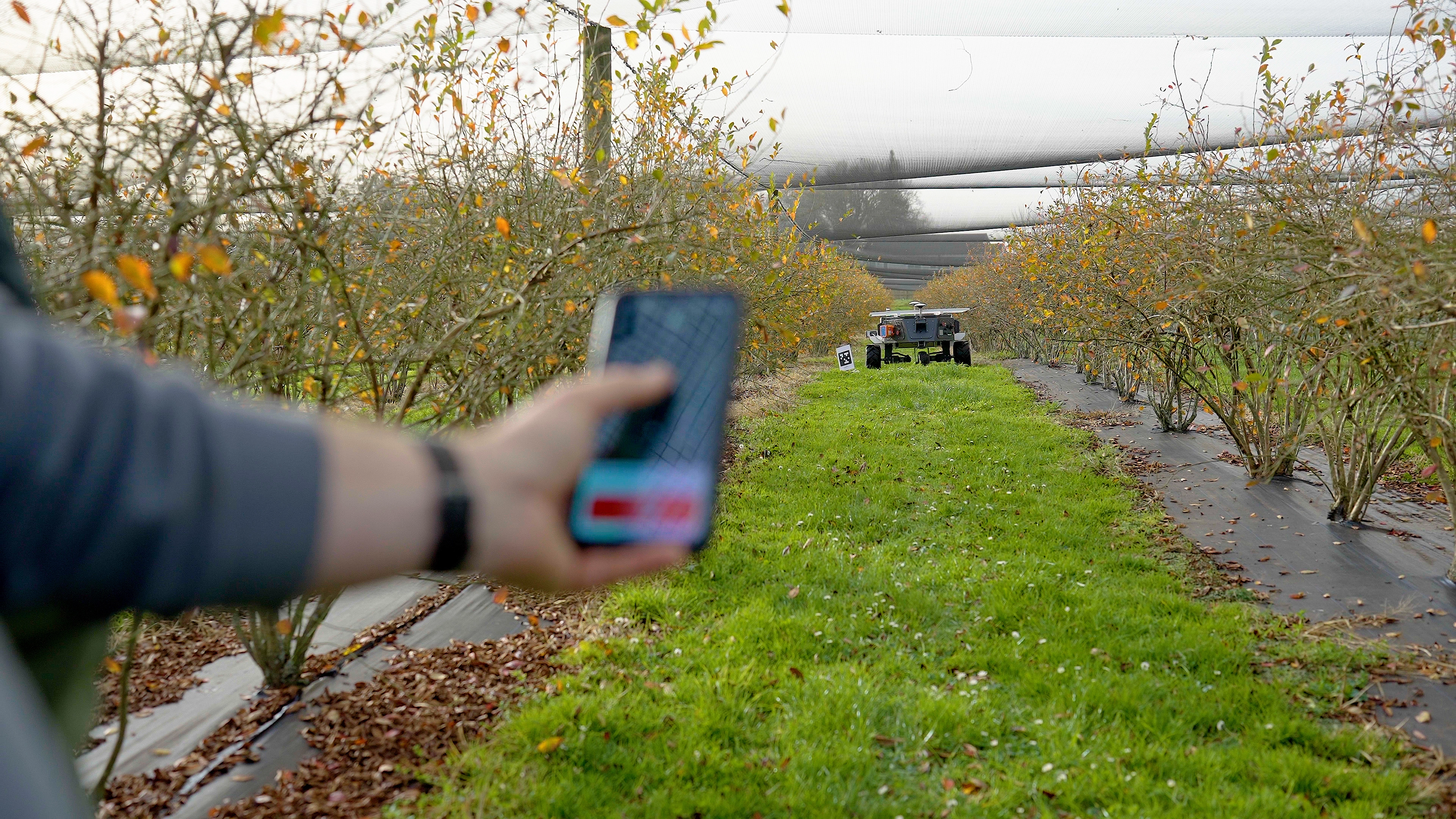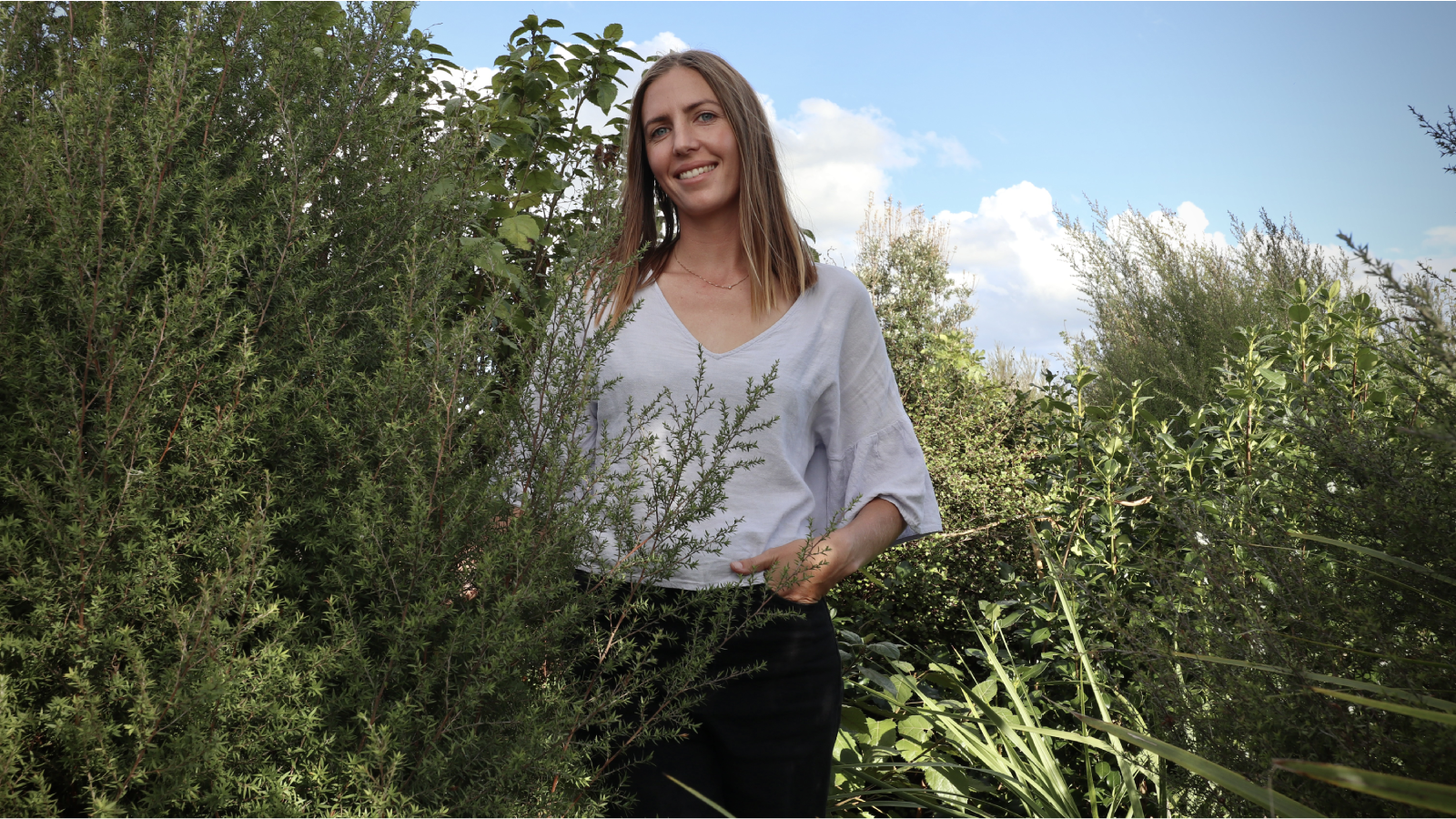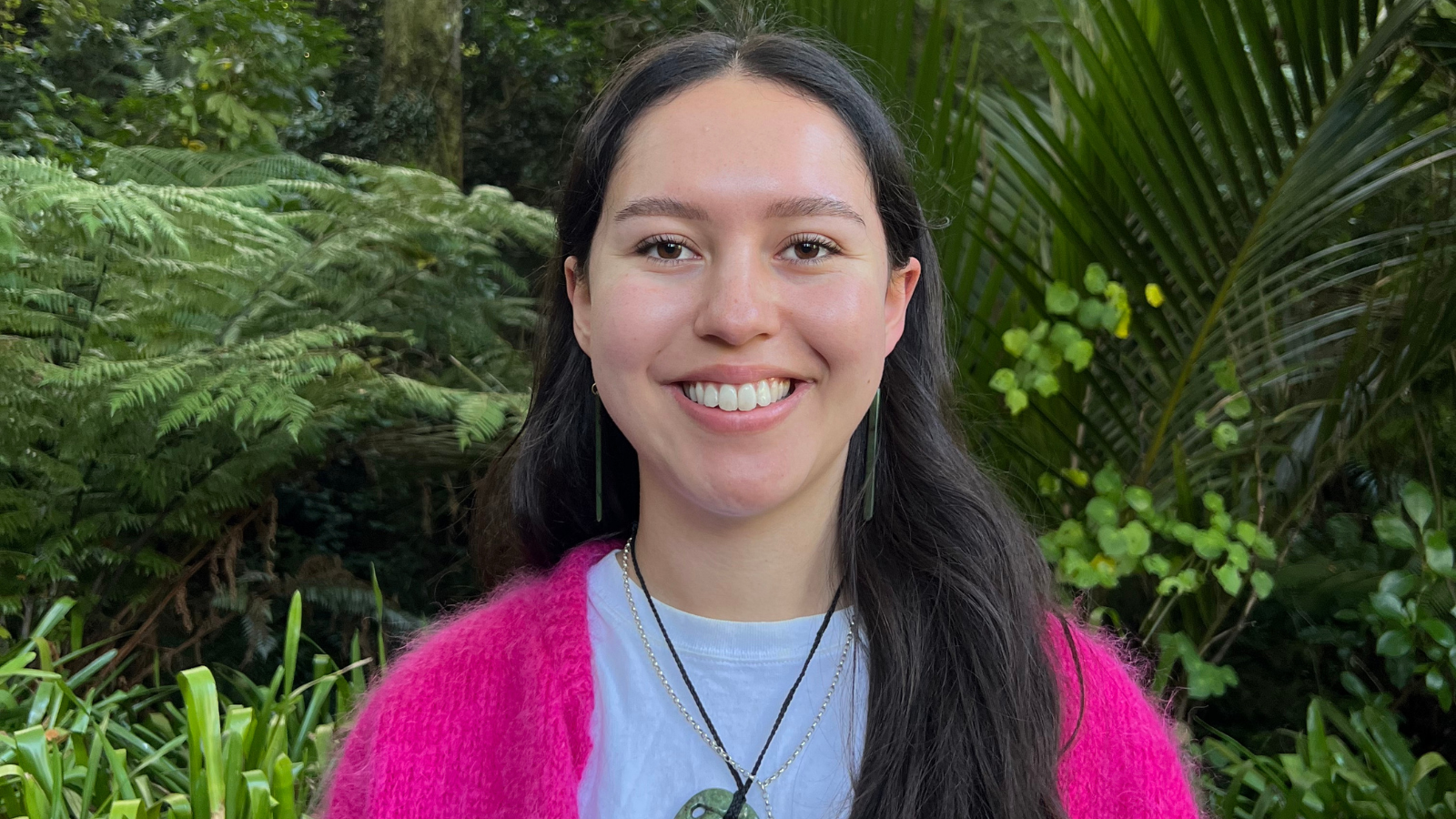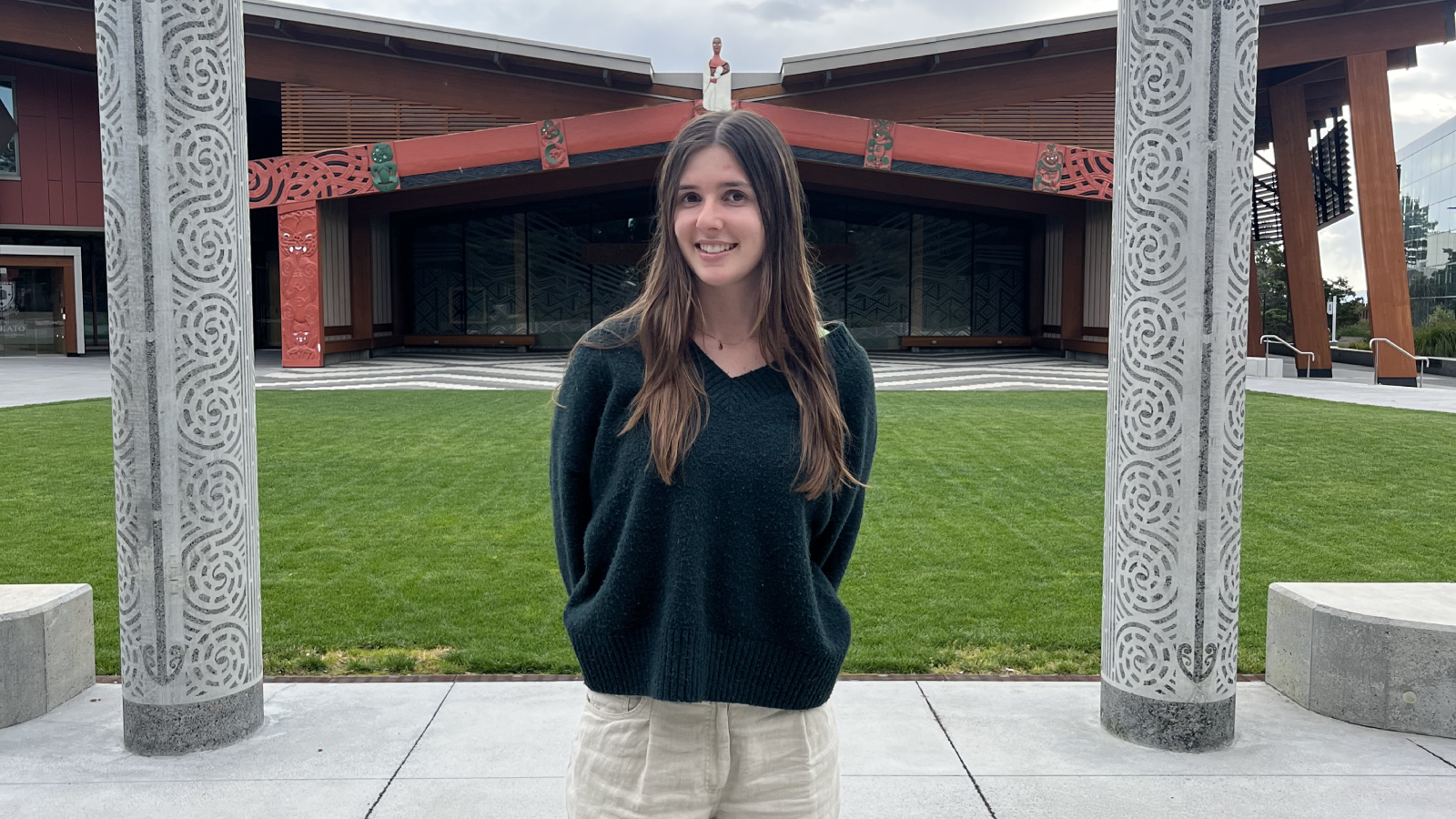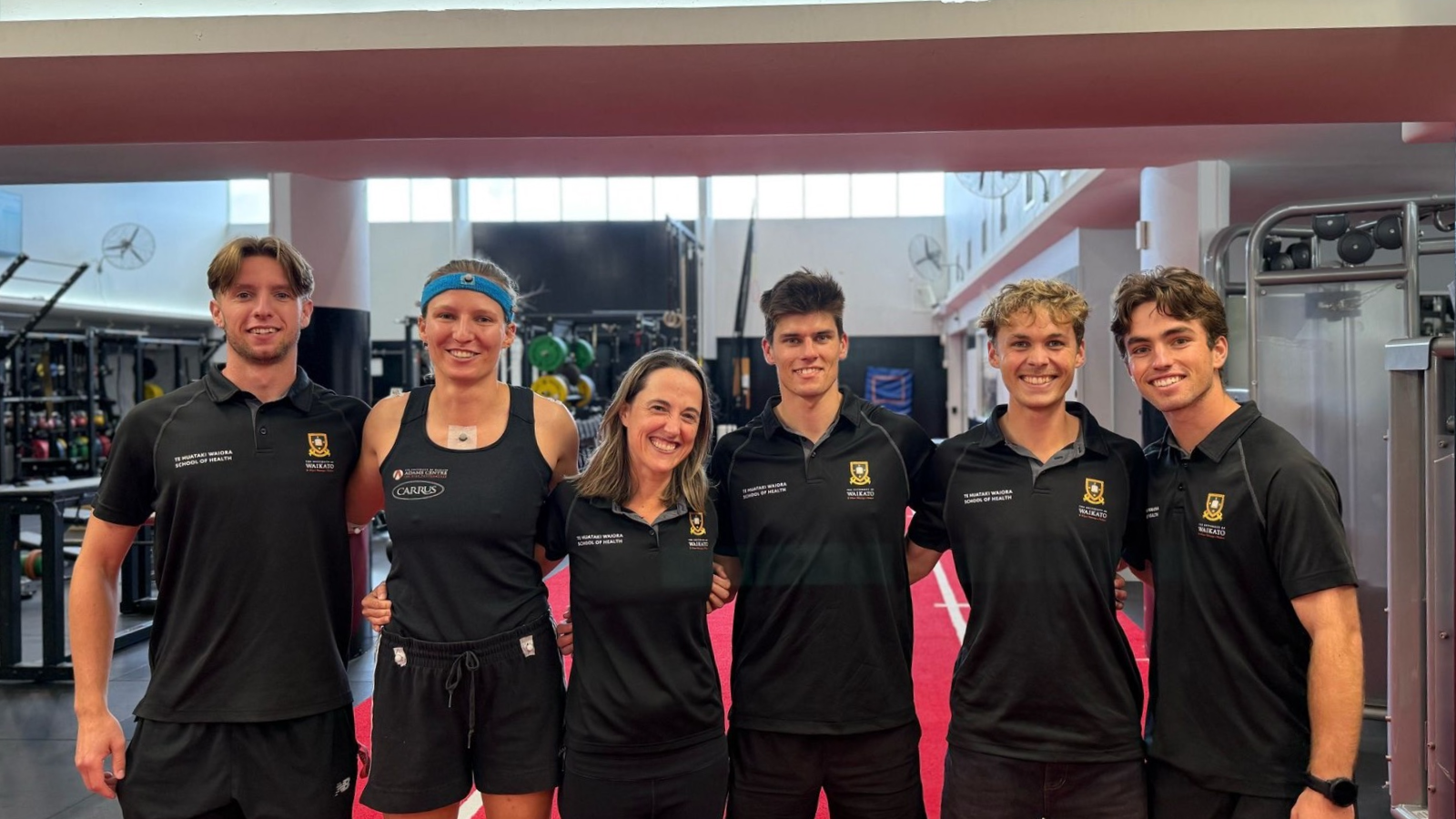Three robots designed by the University of Waikato to increase efficiency, address labour shortages and reduce costs in the horticulture industry are on display at this year’s Fieldays.
The University entered three innovative robots in the Prototype category of the 2024 Fieldays Innovation Awards: a blueberry shaker and catcher, a grapevine pruner and a navigation vehicle.
Handheld harvester eases blueberry picking pressures
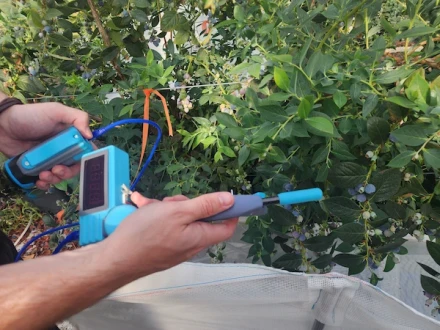 The blueberry shaker and catcher is a handheld human-assist harvest device that shakes a branch at a frequency and time and causes blueberries to fall into a specially developed catcher. It was developed for a Master of Engineering by student Alicia Sim.
The blueberry shaker and catcher is a handheld human-assist harvest device that shakes a branch at a frequency and time and causes blueberries to fall into a specially developed catcher. It was developed for a Master of Engineering by student Alicia Sim.
This method has the potential to reduce harvest damage, minimise fruit loss and improve harvesting efficiency for blueberry varieties that are hand harvested. It is also a low-cost solution for smaller orchards.
Dr Ben McGuinness, from the School of Engineering, says the invention bridges the gap between human and fully automated harvesting for the local fresh blueberry market.
The shaker and catcher system could reduce the need for detailed scrutiny, minimise handling of the fruit, and improve post-harvest quality and quantity.
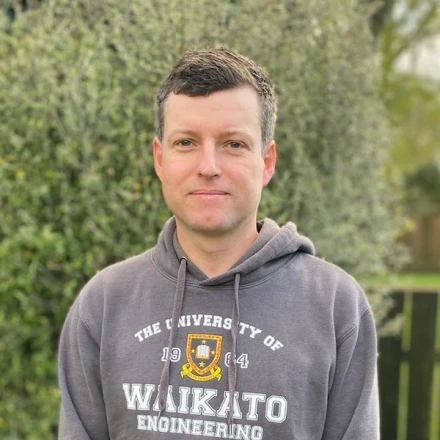
Dr Ben McGuinness, Lecturer in the School of Engineering Teaching and Research, at the University of Waikato.
“By allowing fruit to drop onto soft netting instead of hard surfaces and using a catcher to minimise fruit loss, this method prevents bloom being rubbed off by human hands and could reduce labour time spent on handling and filtering.”
Dr McGuinness says labour shortages and the need for trained, fit pickers are significant challenges facing the industry.
Because of the physically demanding work, the industry typically relies on workers under the age of 40. The shaker opens this demographic and matches the average human pace.
The prototype innovation is in its field trial development stage. Industry stakeholders have expressed interest in funding the creation of additional prototypes for use during harvest due to its affordability and efficiency, quick return on investment and scalability for small orchards.
Technical Lead at BerryCo, David Holmes, says labour costs have risen approximately 45 percent in the last six years.
“Picking blueberries is very labour-intensive and harvest labour is the single largest on-orchard cost,” says David.
“Human assist harvest tools that save on costs would be a game changer for growers.”
Grapevine pruner reduces labour dependence
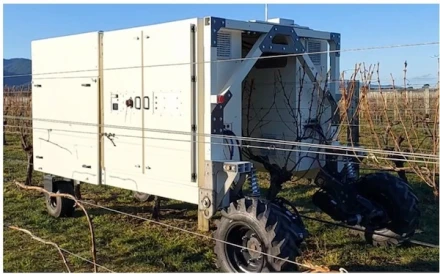 A more complex research robot on display at Fieldays is the autonomous MaaraTech grapevine pruner named Archie Junior. It consists of a vehicle that arches over grapevines and autonomously follows the row, stopping at individual vines.
A more complex research robot on display at Fieldays is the autonomous MaaraTech grapevine pruner named Archie Junior. It consists of a vehicle that arches over grapevines and autonomously follows the row, stopping at individual vines.
Inside, stereo cameras scan the vines, create 3D computer models and identify the vine’s key features. With this information, pruning decisions can be made and robotically performed.
Dr McGuinness says the grapevine pruner should ensure consistent, quality pruning and reduced reliance on skilled seasonal labour, which involves training, staff turnover and variable pruning decisions.
There are issues with obtaining skilled and reliable labour supply. Vineyards struggle to find enough skilled workers to perform the task. Much of the workforce is imported from overseas as there are not enough people available to do the work locally.
“Additionally, there can be a high turnover of staff, requiring extensive training periods. A poor pruning decision can not only result in reduced yield for the coming harvest but in some cases can take years of good pruning decisions to rectify.”
The proposed solution is to be precise and selective and replicate complex tasks and decision-making typically performed by humans. Final field trials are expected to begin this July.
The two innovations are part of the five-year MaaraTech project funded by the Ministry of Business, Innovation & Employment and managed by the University of Auckland, in partnership with the University of Waikato, University of Canterbury, Lincoln Agritech, University of Otago and Plant & Food Research.
Navigation vehicle for orchard automation
Also on show at Fieldays is a low-cost navigation system for autonomous vehicles that can be used in orchards, such as kiwifruit.
The innovation is an affordable alternative to expensive GPS and LiDAR (light detection and ranging) navigation systems currently on the market. It offers a cost-effective setup that can be reused for a wide range of applications such as thinning, grass-cutting, pest detection, and harvesting.
